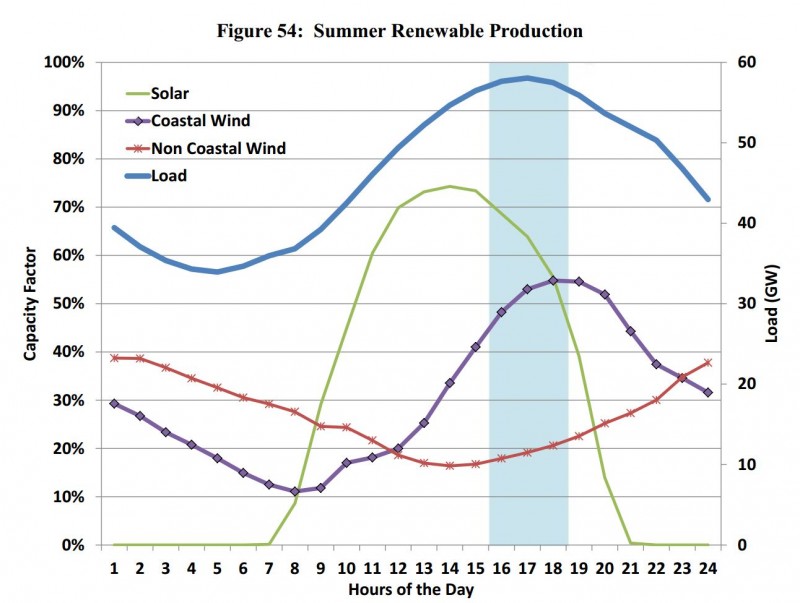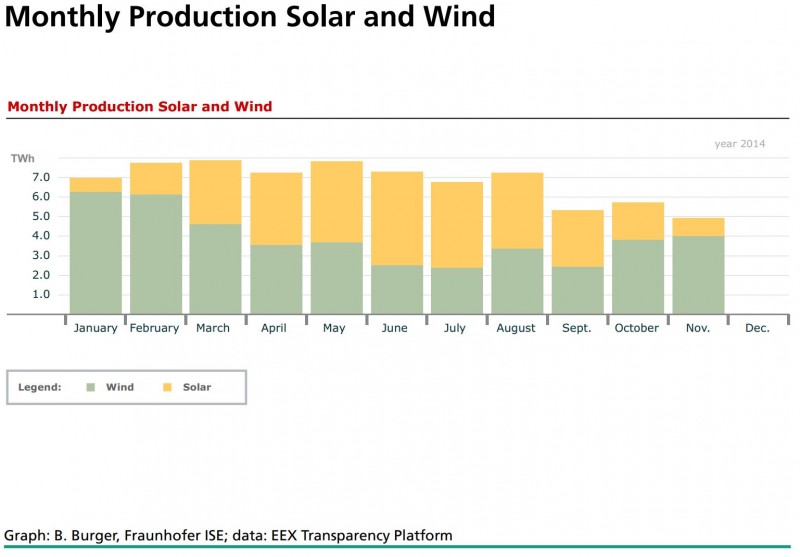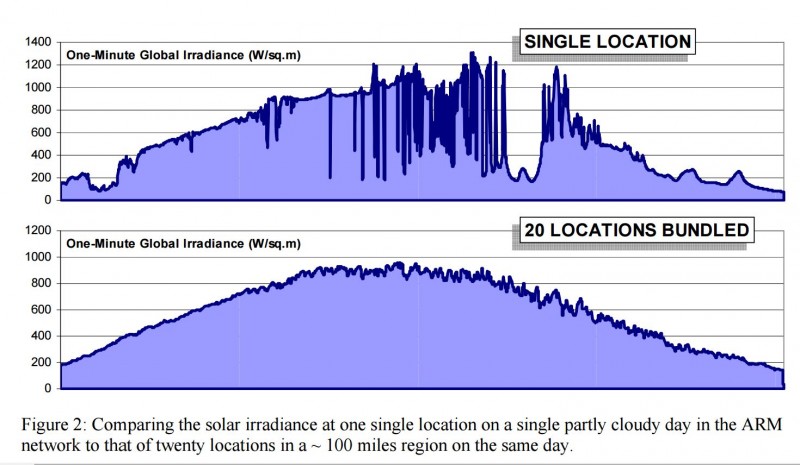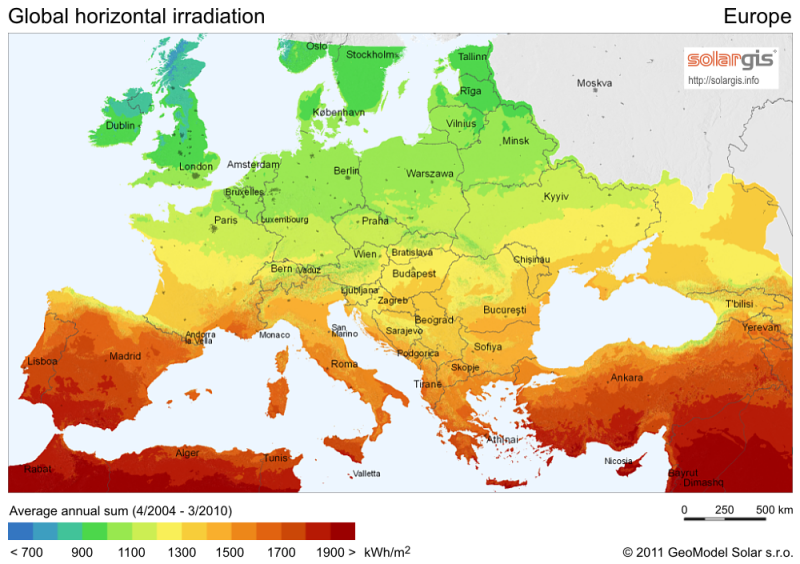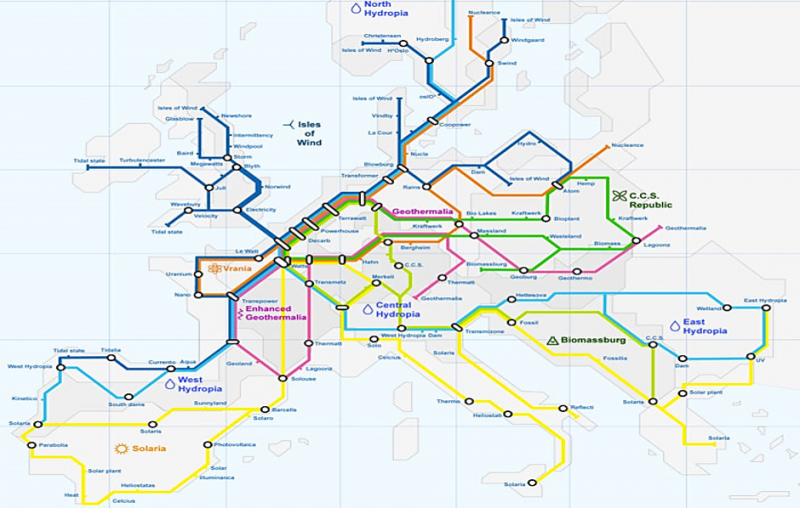Solar + Wind, More Than the Sum of Their Parts
David Roberts has an amazing first post in his new job at Vox, on why a solar future is inevitable.
Clearly I’m bullish on solar. My own reasons are that:
1. Solar is plunging in price far faster than any other energy source.
2. Solar takes very little land: Less than 1% of US land would be required to provide US electricity needs via solar.
3. Energy storage is plunging in price at least as fast as solar, complementing it and providing backstop for it.
That said, there’s very likely a role for multiple source of electricity in the future (let alone multiple sources of energy overall, when one adds in things like transportation and manufacturing.)
Consider wind. Wind power, while not plunging in price nearly as rapidly as solar, is cheaper in many places today. And wind and solar have a dynamic that makes them greater than the sum of their parts: The wind tends to blow most when the sun isn’t shining, and vice versa. That’s true on an hour-by-hour basis, and even true on a season-by-season basis.
Consider this chart of capacity factors by hour of day for solar and coastal and inland wind from the ERCOT grid (Texas).
The top line is electricity load – demand being placed on the grid by people drawing electricity. Load peaks in daylight hours, but stays at that peak in the early evening. The sun sets before load drops, but the wind tends to kick in. And overnight, when no sun is shining, the wind blows, on average harder than it does during the day.
Every gigawatt of solar deployed, for this reason, actually makes wind power slightly more economically valuable.
And while I’ve written extensively about the cost plunge of storage, the reality is that combining solar + wind, at the grid level, often removed the need, at least in the short term, for storage, and reduces the total amount of storage needed on the grid.
The same pattern is generally true across seasons. The sun is most available in summer months, wind most available in winter months. Here’s a view of 11 months in Germany:
The point here isn’t to knock solar. Solar’s ferocious price decline, combined with the fact that it is the most abundant renewable on the planet, give it a clear advantage. Yet there are parts of the world with less sun (Northern Europe, for instance), parts of the day with less sun, and parts of the year with less sun. Combining wind and solar is a bit like adding 1 + 1 and getting three. And for that reason, as solar penetration increases and likely passes wind power in the next 2-3 years, I expect the economic case for wind to actually grow stronger.
That also, by the way, makes the case for the grid. Renewables become far more reliable when integrated over a larger area. Integrating solar power over a wider area cuts the intermittency of clouds, for example:
And for any continent-sized area, using the grid to connect solar + wind allows the best of both worlds, drawing sunlight from the sunny areas, and wind from the windy areas to create a best of both worlds. Indeed, this is what I hope to see happen in Europe, where the northern nations have fairly little sunlight but lots of wind, and the south has abundant sunlight that it could provide to the north.
A European grid to knit these together could provide the best of both worlds to Europe’s electricity system. Energy interdependence over energy independence.

